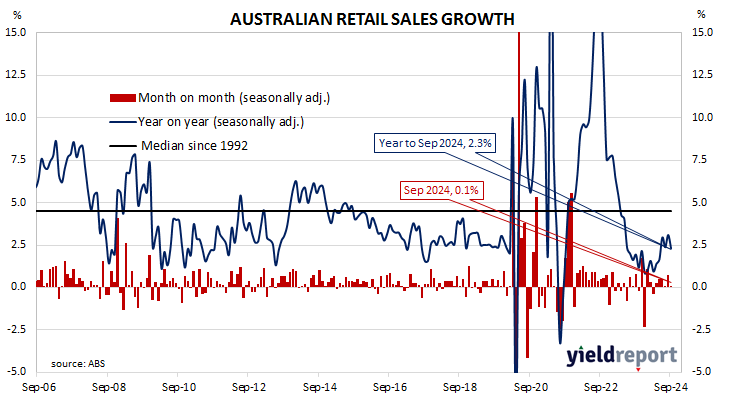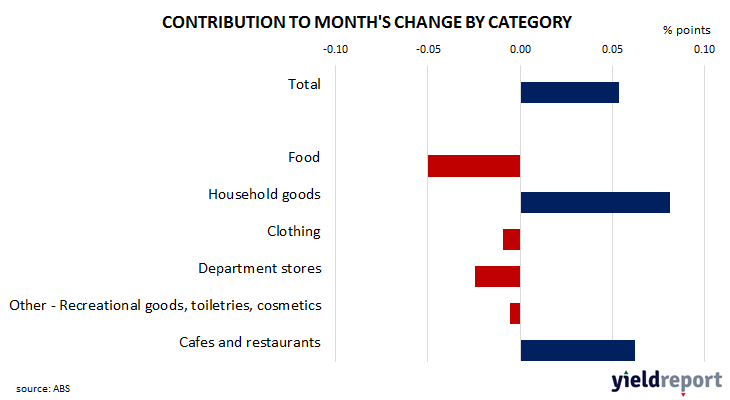Summary: Retail sales up 0.1% in September, less than expected; up 2.3% on 12-month basis; ANZ: cost-of-living relief, moderating inflation, tax cuts flowing through; ACGB yields rise; rate-cut expectations soften, Feb cut uncertain; ANZ: suggests elongated recovery in spending growth; Westpac: typically takes time for retail spending to increase post-tax cuts; largest influence on result from household goods sales.
Growth figures of domestic retail sales spent most of the 2010s at levels below the post-1992 average. While economic conditions had been generally favourable, wage growth and inflation rates were low. Expenditures on goods then jumped in the early stages of 2020 as government restrictions severely altered households’ spending habits. Households mostly reverted to their usual patterns as restrictions eased in the latter part of 2020 and throughout 2021.
According to the latest ABS figures, total retail sales increased by just 0.1% on a seasonally adjusted basis in September. The result was slightly less than the 0.2% increase which had been generally expected and well down on August’s 0.7% rise. Sales increased by 2.3% on an annual basis, down from August’s comparable figure of 3.1%.
“It appears the combined impact of cost-of-living relief, moderating inflation and tax cuts is flowing through to a modest pickup in aggregate spending,” said ANZ economist Madeline Dunk.
The update was released alongside several other monthly economic reports and Commonwealth Government bond yields rose by decreasing amounts along the curve on the day. By the close of business, the 3-year ACGB yield had gained 6bps to 4.01%, the 10-year yield had added 4bps to 4.52% while the 20-year yield finished 2bps higher at 4.85%.
Expectations regarding rate cuts in the next twelve months softened slightly, with a February 2025 rate cut currently viewed as uncertain. Cash futures contracts implied an average of 4.33% in November, 4.31% in December and 4.27% in February 2025. September 2025 contracts implied 3.945%, 40bps less than the current cash rate.
“Our ANZ-Roy Morgan Australian Consumer Confidence measure continues to trend upwards, albeit at a gradual pace,” Dunk added. “That in turn suggests an elongated recovery in spending growth from here. That said, given the increasingly price-sensitive nature of households, we do expect to see strong spending around key retail events like Black Friday and Boxing Day sales.”
“More broadly, the results indicate relatively subdued trends in consumer demand,” said Westpac economist Neha Sharma. “Despite the introduction of tax cuts and other fiscal measures, consumers appear to be selectively spending, especially around sale periods. As noted last month, it typically takes time for retail spending to increase post-tax cuts, and it seems we are still following a similar path to previous periods of tax changes.”
Retail sales are typically segmented into six categories (see below), with the “Food” segment accounting for 40% of total sales. However, the largest influence on the month’s total came from “Household goods” segment where sales rose by 0.5%.



